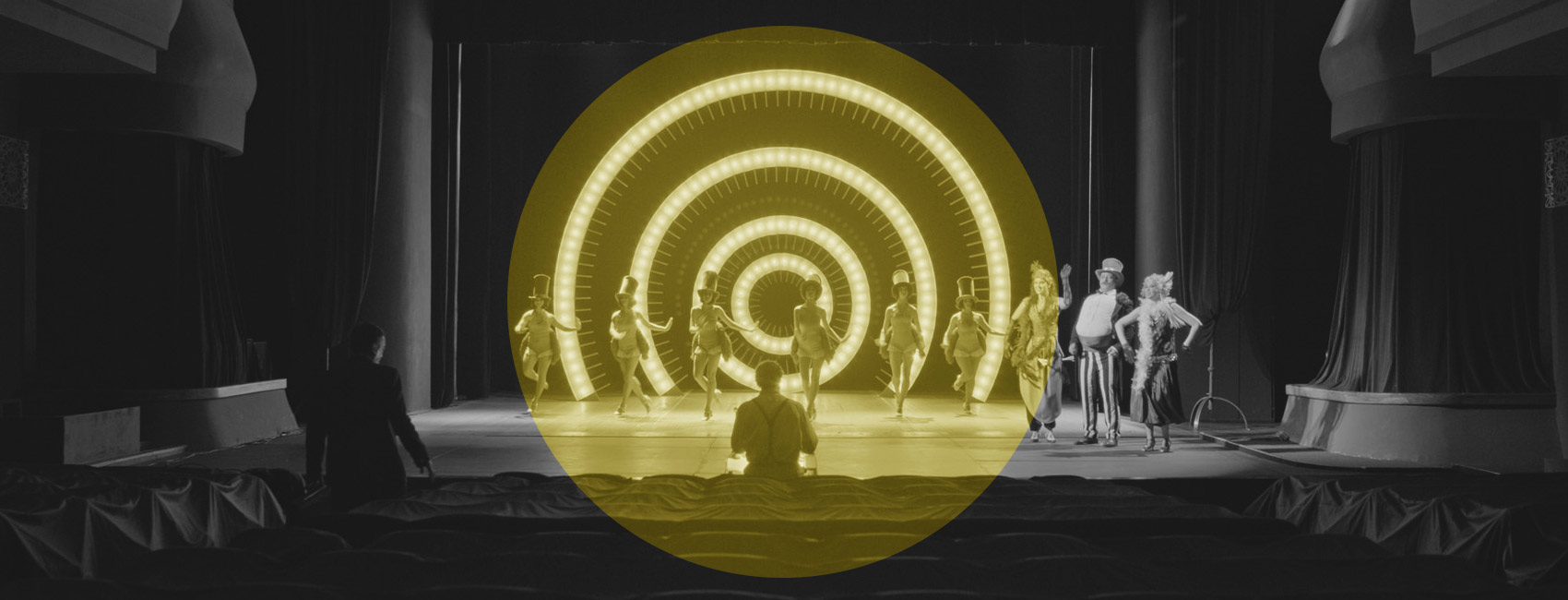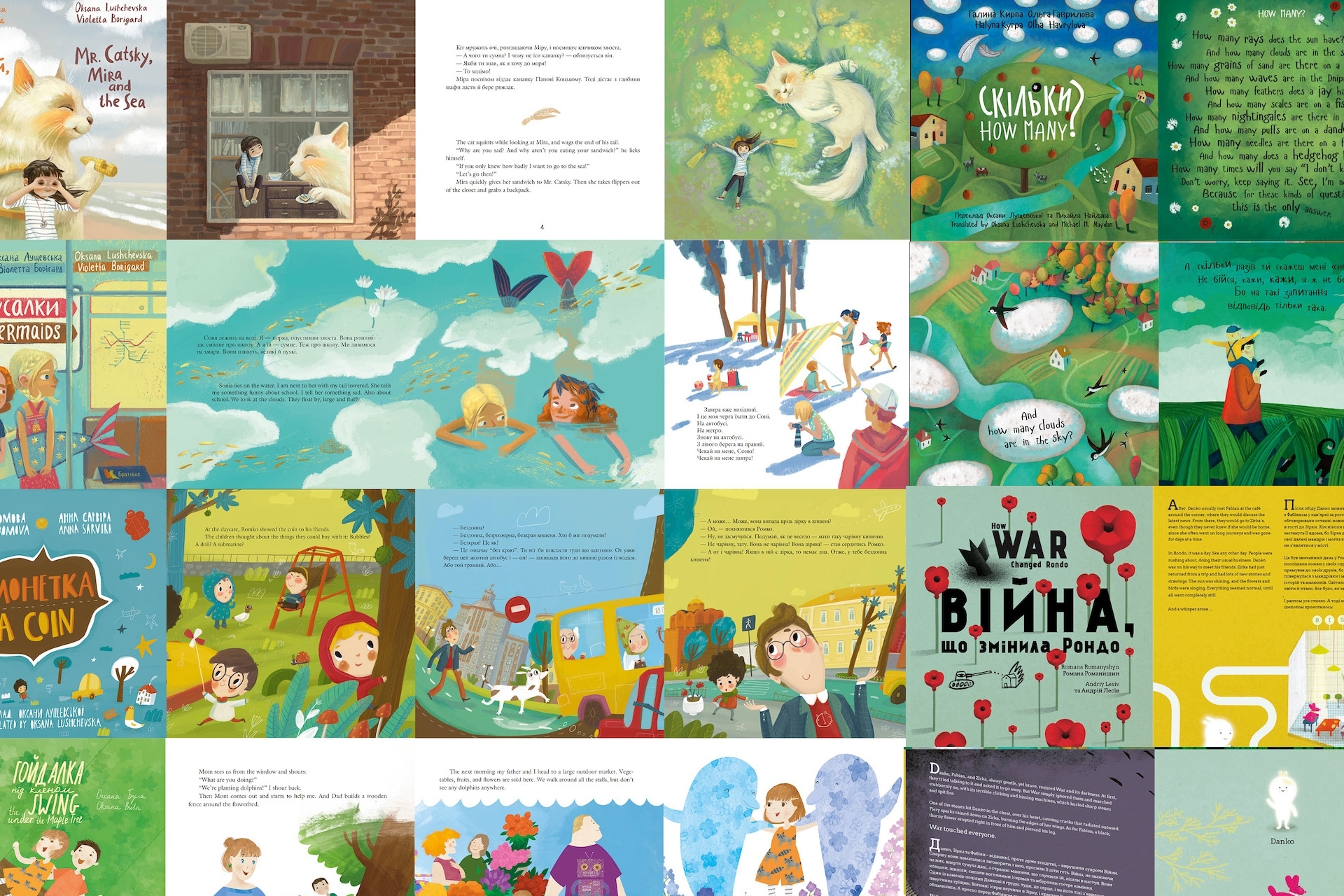* ESC - close the search window
children literature
Chytomo choice: 10 books for children by Ukrainian writers
15.08.2023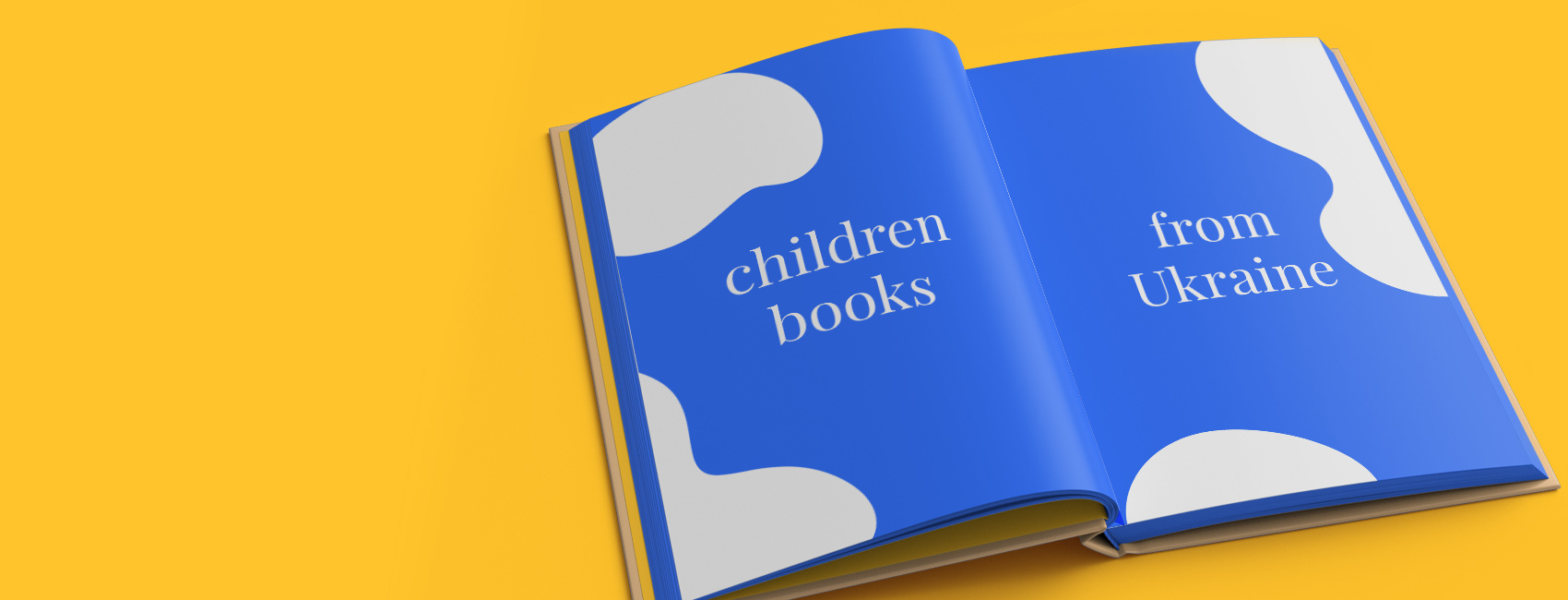
Is it possible to explore Ukraine through children’s books? Among the books translated into English and available on Amazon, there are stories for children that deal with universal themes and values, and there are those that introduce Ukraine directly through the prism of history, adventure, war, or visual elements. In this selection, we offer you 10 publications: from picture books for kids and adventure stories to educational publications and books that delicately and accurately tell children about the war.
This publication is supported by Chytomo community. You can contribute here.
Oksana Bula “Bear Does Not Want to Sleep” (0+)

Let’s start with a book for the little ones. Writer and illustrator Oksana Bula, who became popular with readers for her picture books, has created not just a series of books about forest animals, but a whole microcosm inhabited by forest spirits – tukoni. These terribly cute creatures protect forests, help animals, and fill the world with their magic. In “Bear Does Not Want to Sleep”, the tukonis were supposed to help the bear settle down for hibernation. However, the bear learned from the bison what activities and entertainment can be found in the forest durring winter, and now he doesn’t want to sleep so as not to miss the most interesting things.
The plot of this story resonates with the kind of curious and enthusiastic kids who can be difficult to put to bed. With the help of the fairytale tukonis, young readers, along with the stubborn bear, will be able to get ready for sweet dreams. And the charming illustrations will leave an impression on both young readers and their parents.
Іvan Malkovich “A small bunny in the big city or honey for mommy” (2+)
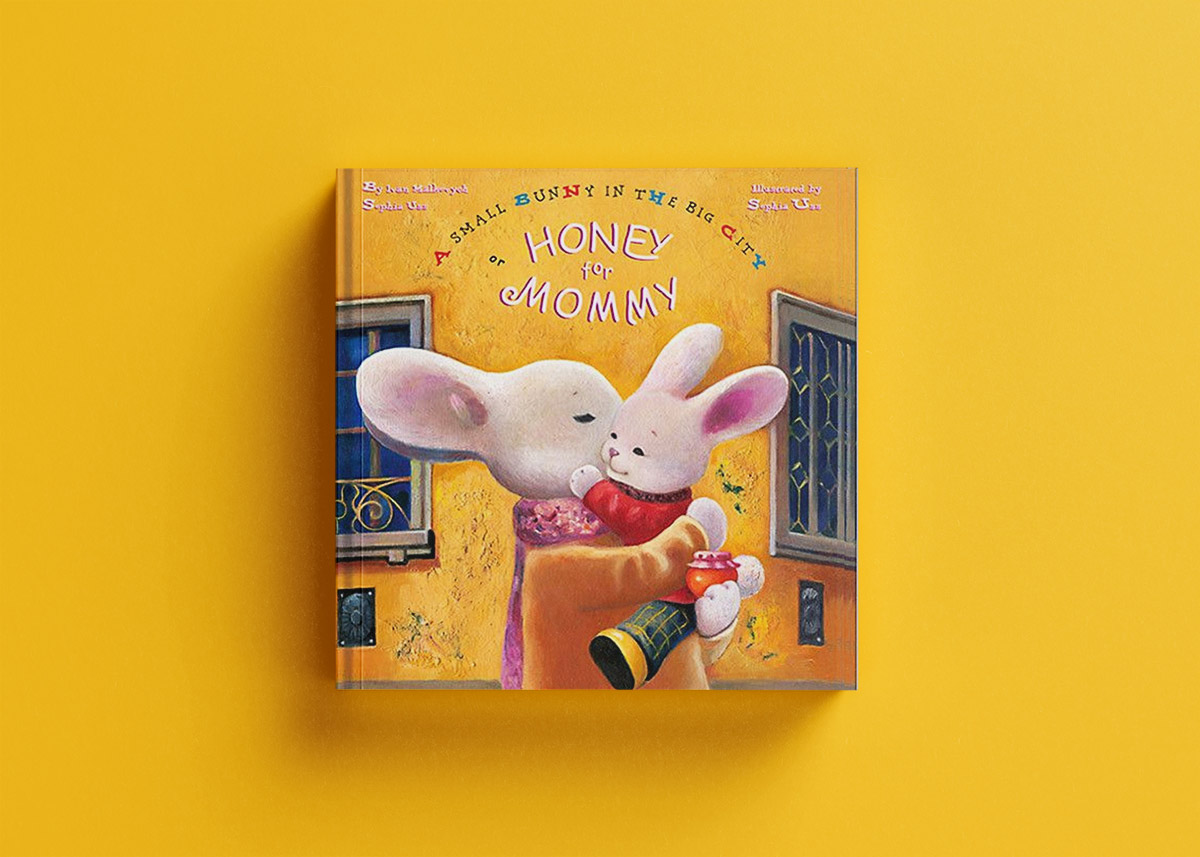
And now let’s meet one of the best-selling Ukrainian books. This story was published only 16 years ago, but it has already become a classic of children’s literature and a favorite of children aged two and older. “A small bunny in the big city or honey for mommy” is a story about a baby bunny who goes to the big city on his own for the first time to buy honey for his mother who has a cold, but gets lost along the way. On this adventurous journey, he occasionally gets into unfortunate mishaps, but meets friendly animals who help him complete his mission and eventually return to his mother.
“Honey for mommy” is a very tender, humanistic story about exploring a big city, independence and support, trust and caution, and the power of love between a mother and her son. It is so touching that it easily wins kids’ hearts, and they will ask to read it again and again.
It is also a story that could have happened in any old European city. Sofija Us’s charming illustrations are imbued with the vibe of this cozy location. Those who have been to Lviv will definitely recall the city’s atmosphere. And those who have never visited it will definitely be inspired to see it.
Kateryna Yegorushkina “Fearless Stories” (3+)
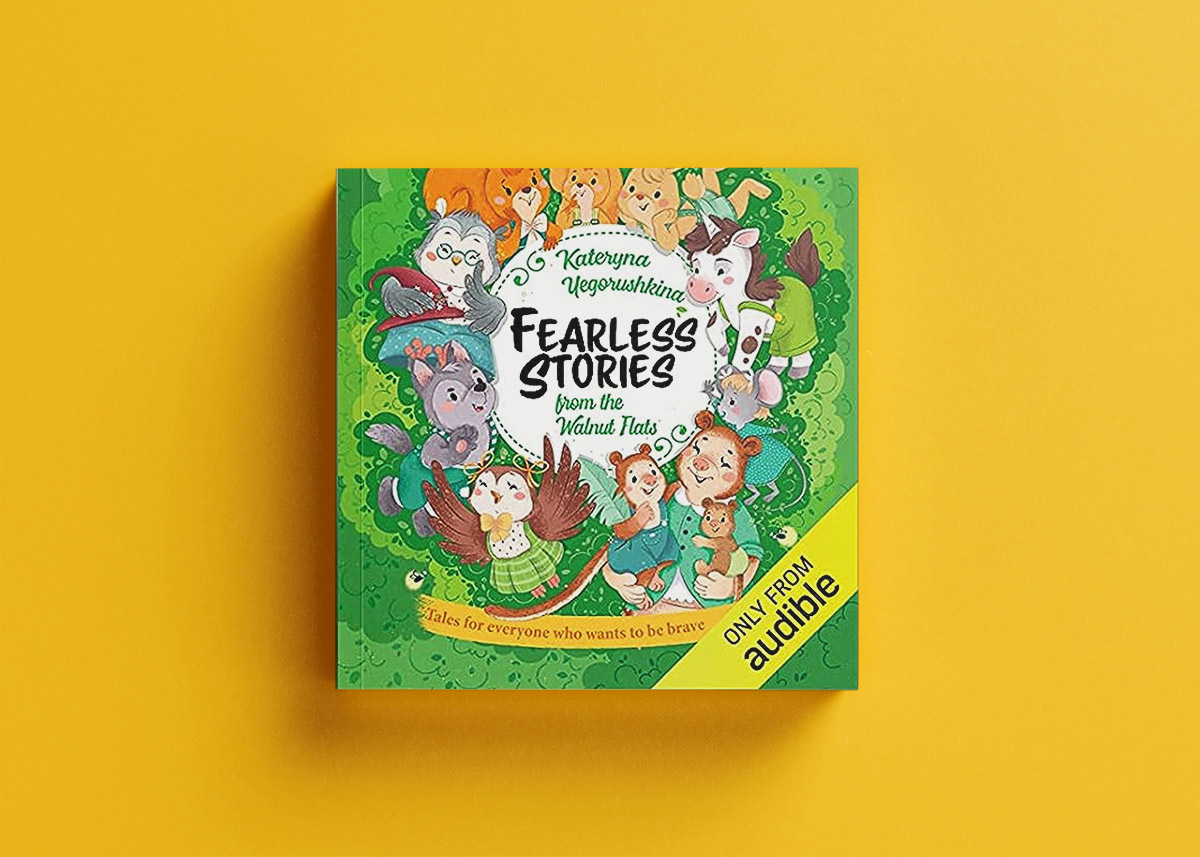
At first glance, the book seems to be a universal fairy tale about animals who live together in the forest town of Goriskovy Plavni (Walnut Flats). While adults are doing adult things, children have fun, learn, sometimes misbehave, but most importantly, learn to overcome their fears. Fear of fire or darkness, school or doctors – all of this can be overcome if you know how and have the support of friends and responsible adults. Together with the characters, young readers will fight their own childhood phobias and become braver and more courageous. Additionally, after each chapter that is devoted to a particular fear, there is a counseling section where the Wise Owl explains where each phobia comes from and how to fight it, and gives advice to children and adults individually.
Why is this story more than a children’s fairy tale? Its title refers to the name of the Ukrainian town of Gorishni Plavni in Poltava region, which received its picturesque name during the process of decommunization, i.e., the elimination of place names that were tied to the ideology of the Soviet Union. Locals initially resisted the name change due to fear but eventually embraced it, much like the characters in Kateryna Yegorushkina’s book. Thus, “Fearless Stories” is a book that inspires us to fight the fears that stand in the way of growth and change.
Romana Romanyshyn, Andriy Lesiv “How War Changed Rondo” (4+)
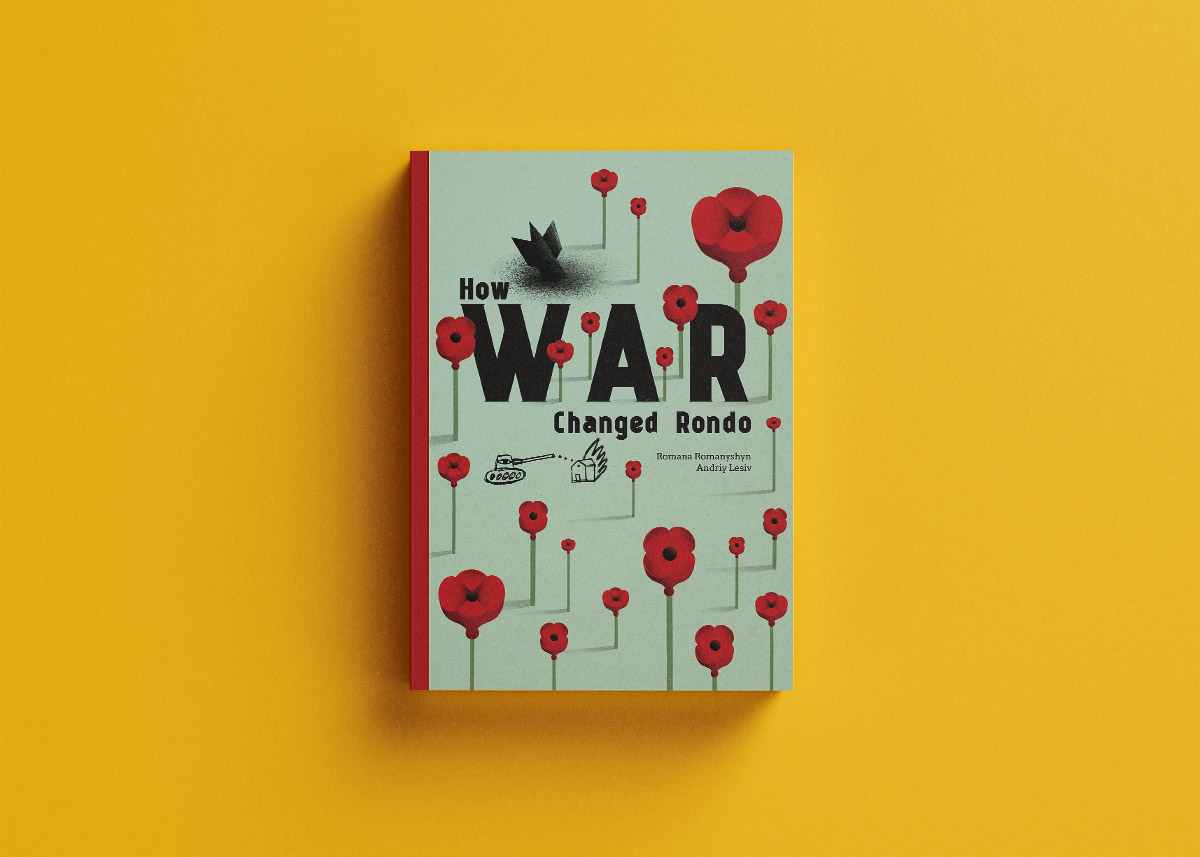
This book has a special place in the list of publications that can help parents talk to their children about war. “How War Changed Rondo,” created by the Agrafka art studio, delivers a poignant tale about the transformation of a city and its inhabitants in the face of war. The authors do not glorify the topic of war and do not portray a black and white world divided into “us” and “foreigners,” “good” and “bad.” War is the true antagonist here, it is the embodiment of evil, blind and unresponsive to any words or deeds. And when war descends upon Rondo, a luminous city, with singing, and mutual care, it spares no one, leaving marks and scars in its wake. Yet, it’s the city’s collective spirit and unity that ultimately triumphs over war. But even after that, they will not be the same as before, and the city, with poppies blooming here and there, symbols of memory and sorrow, will not be the same as it was.
The beautifully and stylishly drawn book, written primarily for children whose towns have been affected by the war (which has been going on in eastern Ukraine since 2015), has proven to be a universal tool for conversations on such a complex and sensitive topic. As a result, it has won a number of international competitions and awards, including the Bologna Ragazzi Award-2015 and the White Ravens, and has been translated into French, English, Italian, Polish, Armenian and other languages.
Discover more visual books in Agrafka’s selection: Subtle matter. A closer look at Lithuanian visual book
Olena Staranchuk, Valentyna Vzdulska, Oksana Lushchevska “Letters on the War: Children Write to Soldiers” (5+)
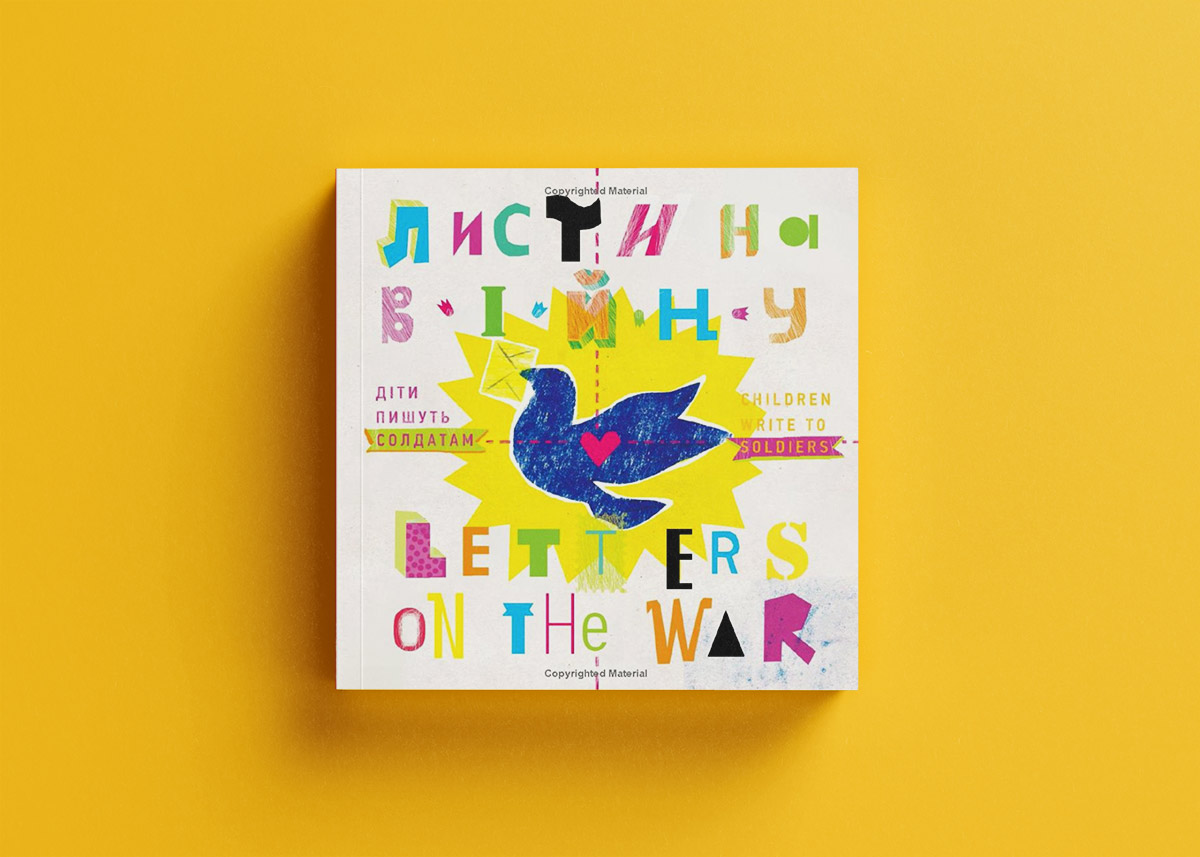
The theme of war is continued in a bilingual book based on documentary materials. In this book, children’s writers Valentyna Vzdulska and Oksana Lushchevska collected authentic letters written by children to members of the Ukrainian military who have been defending the country since 2014. These letters, written by children from a wide spectrum of ages and originating from various regions across Ukraine, provide a glimpse into the thoughts, emotions, hopes, fears, and dreams of very young children and tweens alike. In doing so, this book constructs the image of a Ukrainian soldier as he appears in the eyes of children — as a defender. It shows the perspective children have on the war while offering adults the chance to understand the new reality children find themselves in. For international readers, the book offers insight into how young Ukrainians are navigating these challenging times.
This book is very heartfelt and lively. And although the topic of war is a rather tough and complex “framework” for such texts, they are filled with light, love, faith and hope. “Letters on the War” can be a good basis for a conversation with children on topics not only about the war itself, but also about peace, mutual understanding and social justice.
Ivan Andrusyak “Guinea Pig Investigates” (6+)
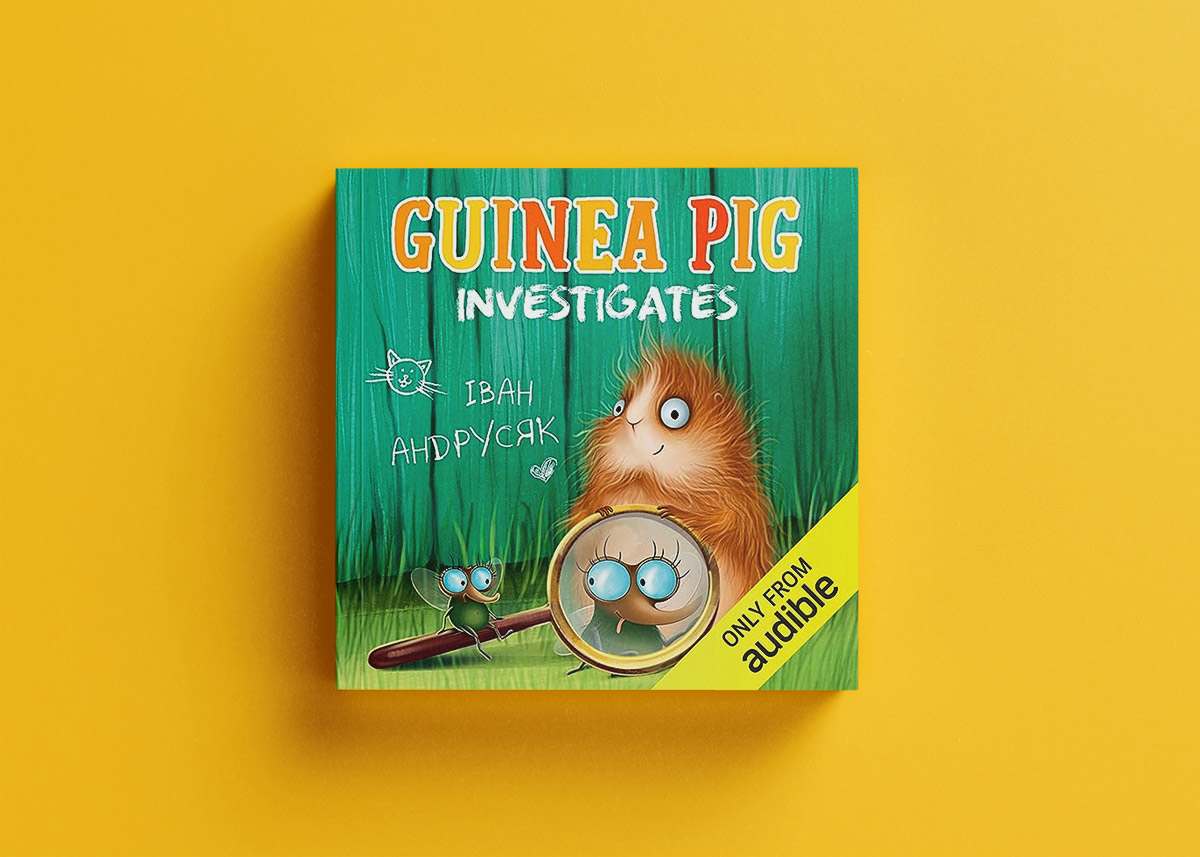
Let’s delve back into the realm of adventure tales featuring animals, this time with a detective story brought to use by one of the most beloved contemporary children’s writers, Ivan Andrusiak. The protagonist of this book is Gerard the guinea pig, who helps other animals unravel complex situations and find answers to difficult questions. In the first story, Gerard investigates the mysterious disappearance of delectable fish from the dishes of his feline pals. In the second story he helps two hamsters (so alike that even they struggle to tell who’s who) identify a monster that scared one of them.And in the third story, Gerard unravels the truth surrounding whether the library cat, Alice, truly devoured the mouse known as Bun. These stories are written with good humor and contain witty references to famous pop culture figures and phenomena that may not be recognized by all children, but will definitely be appreciated by their parents.
“Guinea Pig Investigates,”with its cute illustrations, is also filled with a compassionate attitude towards animals and fosters in children a desire to have a pet and take care of it.
Kateryna Babkina “Cappy and the Whale” (6+)
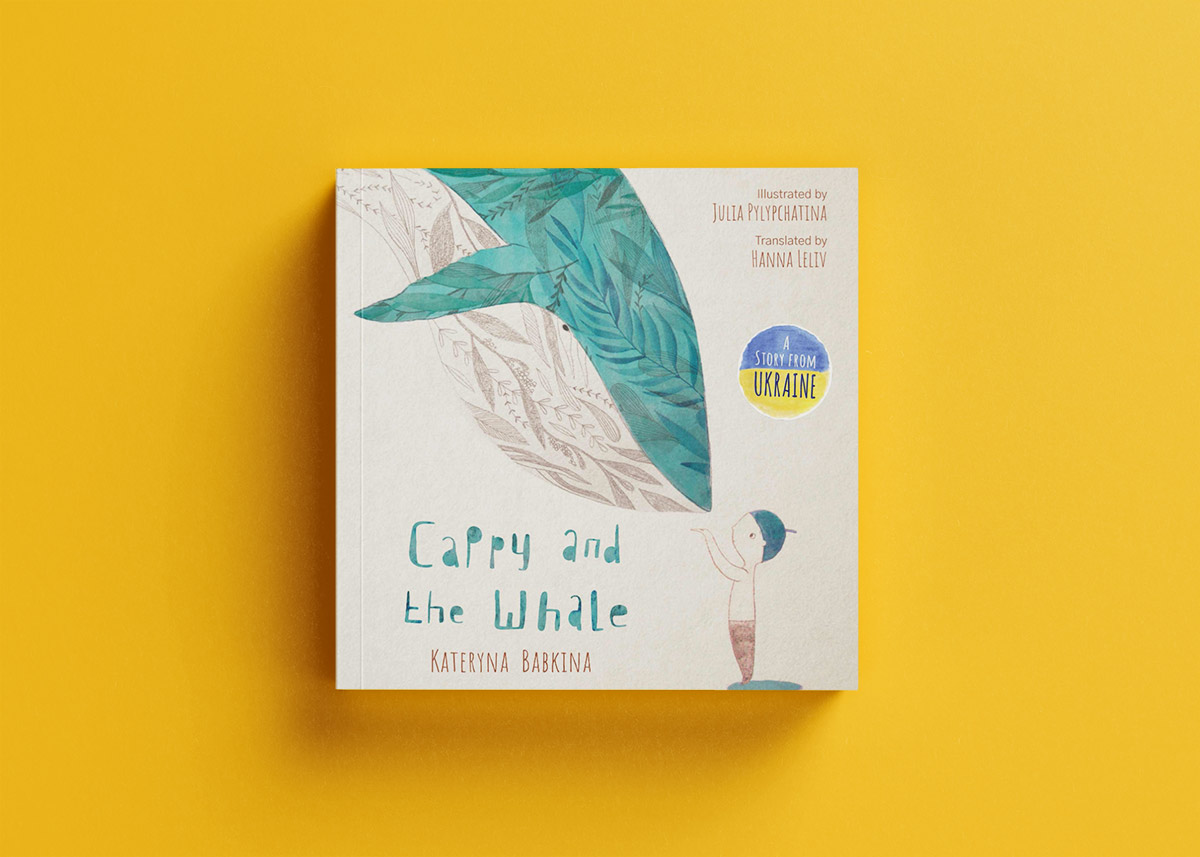
One of the latest English translations published by Penguin Books is a story by Angelus Award winner Kateryna Babkina about children fighting cancer. The main character, Cappy, is a boy with leukemia. While he is undergoing therapy, he has to take a lot of pills daily, adapt to changes in his appearance and give up on many things that his peers enjoy — active entertainment, making new friends, indulging in favorite treats or the possibility of having a pet. However, a whale who appears outside the window to visit him, entertain him and take him for a ride on his back to show him around the city, brings some solace to his life.
With this book, the writer continues the theme introduced by Astrid Lindgren about disadvantaged or lonely children and imaginary friends who help them survive difficult times and go through difficult trials. “Cappy and the Whale” is one of the first books in modern Ukrainian children’s literature on the topic of children’s oncology. It also has a charitable component: a certain amount from the sale of each Ukrainian edition was transferred to the Tabletochki charity fund, dedicated to supporting children with cancer, and the proceeds from the sale of the British edition will be donated to the needs of Ukrainian refugee children.
Larysa Denysenko “Maya And Her Friends” (7+)
The book “Maya And Her Friends” by Ukrainian writer and human rights activist Larysa Denysenko provides a good foundation for discussing diversity, tolerance, mutual respect and acceptance. It introduces readers to Maya’s classmates, who have different backgrounds, different life and social experiences, and come from different family structures. Among them are representatives of social minorities — a Crimean Tatar, a Roma, a Belarusian; children born in vitro and adopted; those who, for various reasons, are raised by single mothers or fathers, or who are raised by their grandmothers while their fathers are away at work, or who have a stepfather; orphans living in an orphanage and children of divorced parents who rotate between living “a week at dad’s, a week at mom’s.” And then there is Maya, who has two mothers. Her family is both unique and akin to the others, because it is built on the foundation of love and support.
Their teacher, Miss Yulia, teaches the characters in the book to see, recognize, and respect all the differences in each other. She emphasizes that “someone being different is not a reason to insult or mock them,” stresses that love does not divide children into friends and foes, and teaches them to accept what others may find strange, unusual, or incomprehensible. This book contains universal human values while at the same time mirroring life experiences and family models that exist in Ukrainian society.
Inna Kovalyshena “Cool History of Ukraine: From Dinosaurs till Now” (8+)
This book serves not only as an introduction to Ukraine’s history since ancient times but also has the potential to captivate children who previously held no interest in history as a subject. After all, this is not a textbook with dry facts and dates, but an exciting adventure that four friends live through as they explore the world and discover their country’s past. The main characters also represent a kind of cross-section of Ukrainian society in its diversity and modernity. In particular, they include a Crimean Tatar woman and the son of a female soldier. So, of course, in this book readers will learn about the rich culture and tragedy of Crimea, as well as the historical background that led to the current war.
Through the characters’ archaeological pursuits and historical investigations, readers will, together with the characters, sense the seamless thread of Ukrainian history. They’ll learn about its most pivotal milestones and their significance in the global and Ukrainian stages. They will also find answers to the question of what made Ukrainians brave and unbreakable in the eyes of the world today.
Of course, these ten publications do not fully convey the diversity of contemporary Ukrainian literature for children. But they can be the first step toward a closer acquaintance with it. And they can help to get to know Ukraine at least a little better.
This publication is sponsored by the Chytomo’s Patreon community

